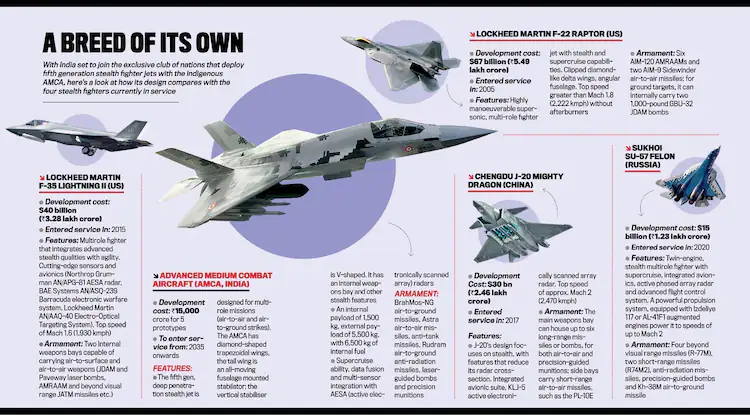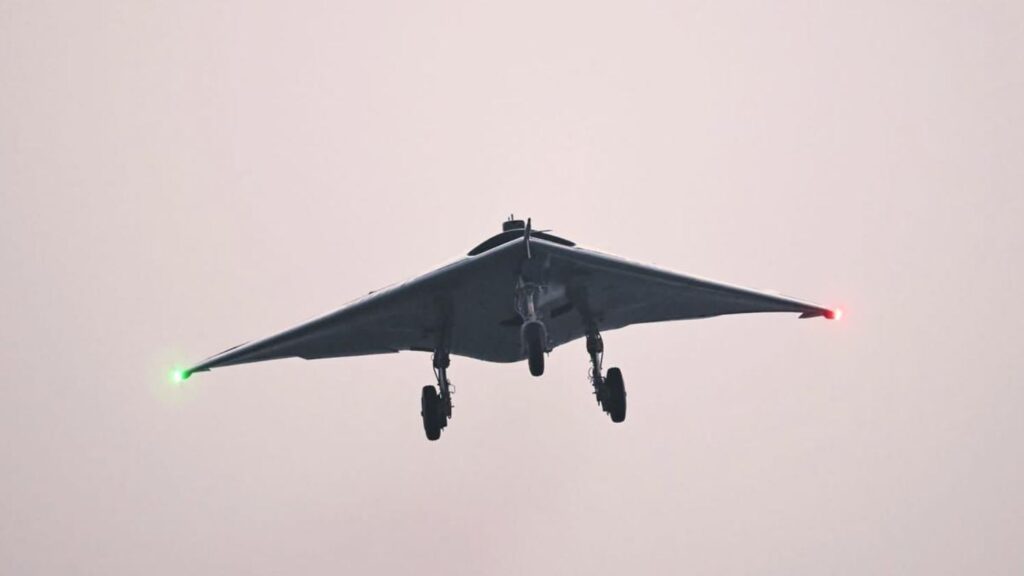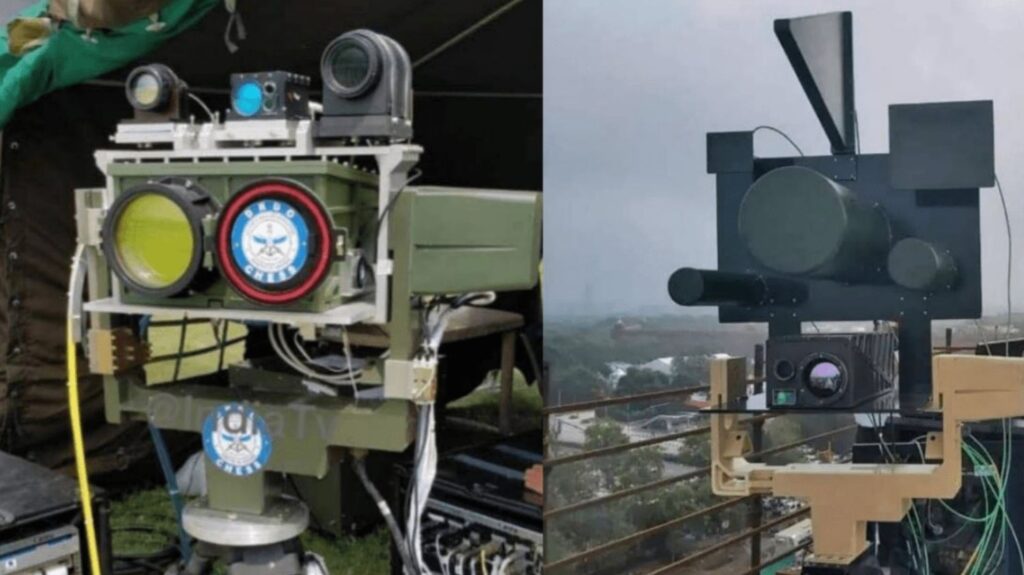The development and testing phase of India’s indigenous fifth generation stealth fighter jet, the Advanced Medium Combat Aircraft (AMCA), has been initiated by the Cabinet Committee on Security. Anticipated to commence production in 2035, this would equip the IAF for future combat.
Developing more advanced fighter jets has been a continuous goal for leading military powers, as air power is considered the sword arm of offensive operations and important for defense in all current military doctrines. The few most technologically advanced fighter jets—a very elite category—that have been built over the past 30 years are referred to as “fifth generation fighter aircraft” (FGFA). These devices have networked data fusion, sophisticated avionics, and multirole capabilities, which improves situation awareness in combat. However, the one characteristic that distinguishes a fifth generation jet from other contemporary fighters is its “stealth” ability—the capacity to elude opposing ground defense radars and aircraft detection.
That class of aircraft includes the Lockheed Martin F-35 Lightning II and F22 Raptor (US), the Sukhoi Su-57 Felon (Russia), and the Chengdu J-20 Mighty Dragon (China). Turkey’s indigenously produced fifth generation stealth fighter plane, Kaan, made its first test flight on February 21. Turkish Aerospace Industries and UK-based BAE Systems are the developers.

Since 2009, aerospace experts in India have been discreetly developing the Advanced Medium Combat Aircraft (AMCA), the country’s own fifth-generation stealth jet, at the Aeronautical Development Agency (ADA) complex in Vimanpura, a Bengaluru aeronautical hub.
The Cabinet Committee on Security (CCS), the nation’s highest body on security matters, approved the next stage of the AMCA project on March 7 by sanctioning Rs 15,000 crore for its prototype development, in a move that could catapult India into the select group of countries that run FGFAs. With assistance from Indian private companies, the Defence Research and Development Organisation (DRDO) of the Ministry of Defence (MoD) and Hindustan Aeronautics Limited (HAL) will collaborate to build the five twin-engine prototypes.
Innovative technologies
A stealth fighter uses specialized paint coating, radar-absorbing material to reduce radar bounce-off, exhaust nozzles to reduce infrared radiation emitted by the engine, exhaust plume, and fuselage, technology to reduce the heat signature of the engine, and special radars to minimize emissions that enemy radars can pick up in order to be able to avoid enemy radars and air defense mechanisms. The capacity to store intelligent weapons inside and perform supercruise—a continuous supersonic flight of an aircraft without the use of afterburners, a component in jet engines that increases thrust during takeoff and supersonic flight—are linked to stealth capability. The ADA asserts that it has created comparable technologies domestically. First glance will serve as the foundation for the AMCA.
The long struggle
India established a study committee in 2005 to examine the capabilities of fifth generation fighter jets following the US debut of the F22 Raptor. The ADA was then granted a budget of Rs 90 crore in 2009 to conduct a feasibility study for a stealth fighter jet. The first workable configuration was hammered out by AMCA developers in 2013, four years later, and approved by the IAF.
However, in 2010, encouraged by the triumph of the India-Russia BrahMos cruise missile project, both countries decided to work together to create a FGFA. An agreement was reached to execute a preliminary design contract, whereby Russia would purchase 250 aircraft and India would purchase 144, at an approximate cost of $30 billion (Rs 2.46 lakh crore) .
Read Also: A Great Success 6 Naxals Killed in Chhattisgarh’s Bijapur











